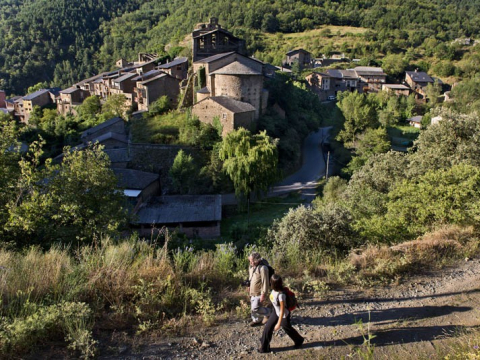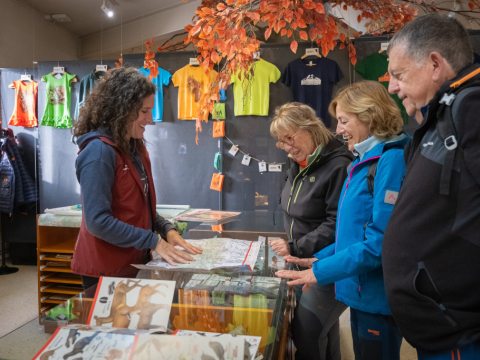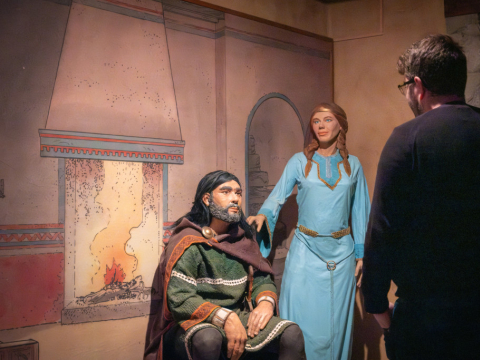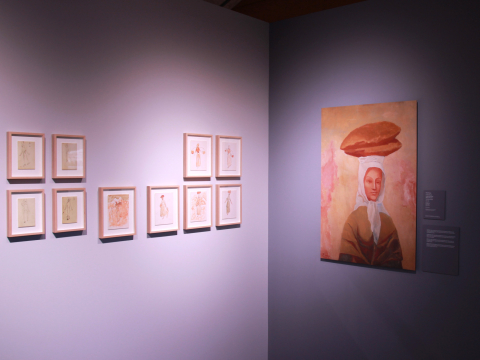Què veure al Camí dels Bons Homes
A small village where there is a primitive church dedicated to Sant Climent that is documented since the 10th century. The origin of the current temple is a Romanesque church from the 11th century, which was rebuilt in the 19th century and then fell into ruin. It was restored in 1979.
It is a town linked to the historical and legendary past of Catalonia. In addition to the magnificent old town (where you can see the medieval tower of La Portella, the Porxada square and stroll through the streets), you can visit the Medieval and Cathar center and the information office of the Cadí-Moixeró Natural Park with its permanent exhibition.
Founded in 1225, it is located at an important communications crossroads: the royal road that followed the course of the Segre – the ancient Roman Strata Cerdana – and the Via Bergistana, which came from the Pendís pass, basically for livestock. Part of the walls that surrounded the current old town, which is very picturesque and well preserved, remain from the medieval period. Highlights include the Plaça Major, the Town Hall and Customs buildings, restaurants, and alleys with portals and...
A walk through the old part of this town allows you to discover the medieval streets and courtyards. The old quarter and the only portal that remains of the ancient walls, the portal of Santa Magdalena, stand out, as well as a facade of the Peguera palace, both Gothic. On Carrer Major is the church of Sant Joan, in Gothic style, which still preserves part of the Romanesque nave. Dominating the city is the castle of Sant Ferran, which was last fortified in the 18th century.
The church is documented from the 11th century, and the Castle, of which there are no remains, from the 13th century. Located on a high hill above the Aigua de Valls, it enjoys a wonderful view. We need to make a stop there. If we go behind the ruins we can see how the Aigua de Valls flows through the middle of an impenetrable forest area.
This house is an important point, the surrounding fields are cultivated and there is life, even a sign tempts the walker by offering fresh and authentic honey and cheeses. The view of the valley from here is magnificent.
Seat of the count and symbol of accounts, it is a place strongly linked to Catharism.
The present fortifications on the rock probably preceded the Castle of Foix. The Ciutadella has been mentioned since 970, but it was after the creation of the Comptat, in 1002, that the castle took on its current appearance, with the construction of the two square towers. The round tower is later and dates from the 15th century.-
Prosperous medieval town dominated by the castle of the viscounts, the most powerful in Catalonia. The residents of Castellbò, always faithful to their lords, were the authors of the stoning of the inquisitor Pere de Cadireta, which is why they earned the nickname matasants, already collected by Francisco de Zamora at the end of the 18th century and which is still valid today. A town now integrated into the Seu d'Urgell; it was probably the original enclave of the current capital and bishopric of Urgell. The town is sheltered under the enclave of the old castle that was owned by the Viscounty of Castellbò, a strategic place where, in the 18th century, a military citadel was built.
-
Come to the Cadí-Moixeró Natural Park, where you can discover nature through historic paths, enjoy the different facilities (viewpoints, leisure areas, botanical gardens, etc.) or participate in the activities organized there. You can't miss it!
The Park Centre is the office from which the Park is managed, but it also provides information and is an interpretation centre. -
In the old Palau de Pinós de Bagà there is a permanent exhibition on Catharism and the medieval period in the town of Bagà, where through different characters, the link between the Cathars and these regions is explained, allowing the viewer to learn about the rich past of the historical capital of Alt Berguedà.
-
The Picasso Center in Gósol houses the most representative exhibition of the three hundred and two works attributed to the artist's Gósol period, the originals of which are distributed across different museums in Europe and the United States. You can also see a large collection of old photographs of Gósol, everyday utensils of the time such as oil pitchers, lamps to scare away wolves, the spinning wheel... all of which reflect the character of the people who made this change in the history... From that pass you can enjoy very good views of the two slopes that it separates. It's like a large meadow, with the house on one side and near a tree, as a shelter from bad weather and the wind that blows right in the middle of the pass.
The two passes (with the Collell pass) are at the foot of the Cadí massif that connects it with the Pedraforca massif. The surroundings of this pass are large meadows that are ideal for grazing livestock, there is also the Bassotes spring and a watering hole for animals.
Entrance to the Peguera valley, a very humid area, where there is the presence of all types of mosses and ferns, as well as oaks, chestnut trees and birches. The undergrowth is very clean and in the deepest part of the forest there is a beech forest. The atmosphere looks like a forest with Atlantic characteristics.
Large meadow ideal for grazing, right on the edge where tree vegetation begins to appear sporadically. The view of the surrounding peaks is magnificent: to the north, the Fontnegre peaks; to the west, looking back, the Envalira peaks and to the south, the Esquella hill, the Colom rock and the Peiraforca.




